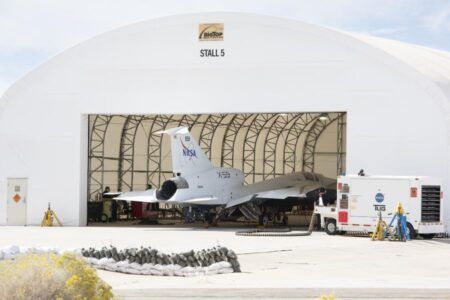NATO’s first Alliance Ground Surveillance (AGS) aircraft took off on its first flight from Palmdale, California, USA, on December 19, 2015, and successfully completed a wide range of tests before landing at Edwards Air Force Base in southern California, USA.
A derivative of the Global Hawk unmanned surveillance vehicle, the AGS can fly for up to 30 hours. The high-altitude long-endurance system will perform all-weather, persistent wide-area terrestrial and maritime surveillance in near real time. The NATO-owned and operated system will provide intelligence, surveillance and reconnaissance capabilities to support a range of NATO missions such as protection of ground troops and civilian populations, border control, maritime safety and humanitarian assistance.
Leading edge technologies are fitted to the AGS including the Multi-Platform Radar Technology Insertion Program (MP-RTIP) sensor. MP-RTIP provides critical data to commanders during operations, in any weather, day or night. Utilizing this system, the NATO AGS system will be able to link up sensor data, continuously detecting and tracking moving objects and providing imagery of selected objects.
When flight testing is completed, five NATO AGS aircraft will be delivered to Sigonella, Italy, where the US Air Force-owned Global Hawks are based. The first will arrive in 2016 supported by mobile ground stations for data link connectivity, data processing and exploitation capabilities to multiple deployed and non-deployed operational users.
January 8, 2016




